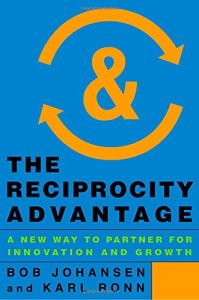
The Reciprocity Advantage
A New Way to Partner for Innovation and Growth
Read or listen offline
Recommendation
The Institute for the Future (IFTF) in Silicon Valley makes medium-term predictions – about 10 years into the future. Since it opened in 1968, some 60% to 80% of its forecasts have been accurate, so readers will find worthwhile indicators in this publication. While the predictions for the years leading up to 2025 will almost certainly alarm and unsettle you, they might also energize you to prepare now for what could emerge as one of the most disruptive 10 years in business history. From the implications of a generation of now-teenaged digital natives to the impact of “cloud-served supercomputing” and 3-D printers, futurists Bob Johansen and Karl Ronn weave a convincing narrative. They back up their arguments with informative charts and graphs – calling for more collaboration, more trust, more giving and more thinking about what you really offer as a person or an organization. Though their report focuses mainly on big, billion-dollar businesses, and not so much on individuals and smaller businesses, getAbstract suggests it to everyone who wants to prepare for the future.
Take-Aways
About the Authors
Bob Johansen studies the future at the Institute for the Future in California. He and Karl Ronn help organizations and senior executives prepare and create breakthrough innovations.




















Comment on this summary or 开始讨论